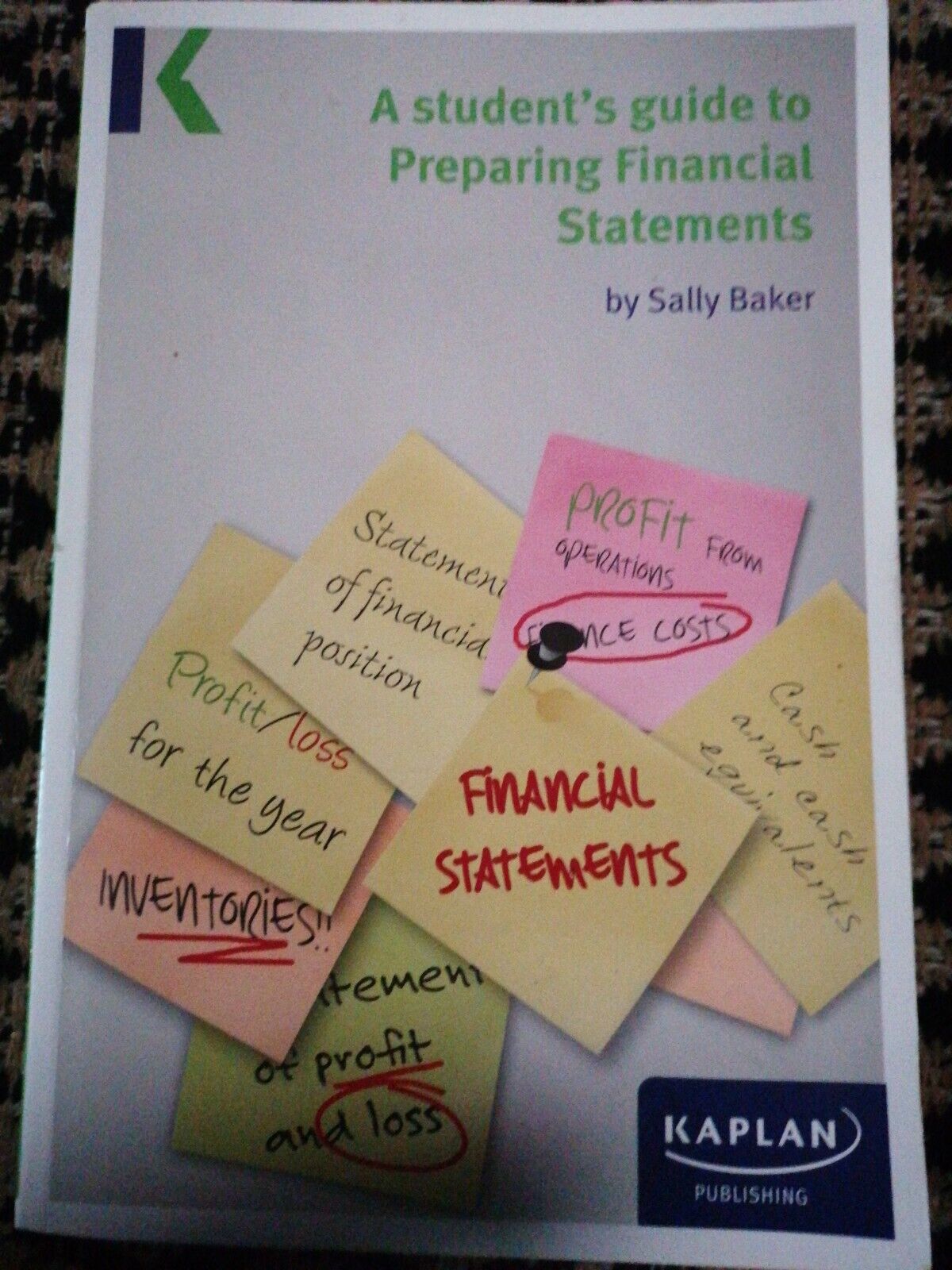Financial statements are crucial for businesses of all sizes. They provide important information about a company’s financial performance and position, and are used by various stakeholders such as investors, creditors, and management to make informed decisions. However, the preparation of financial statements is not a simple task as there are specific requirements that need to be followed. In this article, we will discuss the main guidelines for preparing financial statements, including Generally Accepted Accounting Principles (GAAP), International Financial Reporting Standards (IFRS), and Small Business Accounting Standards (SBAS).
GAAP: The Standard for Financial Statement Preparation

One of the most crucial requirements for financial statement preparation is the use of Generally Accepted Accounting Principles (GAAP). These principles are a set of accounting rules and standards that have been established to ensure consistency and transparency in financial reporting. GAAP is issued and regularly updated by the Financial Accounting Standards Board (FASB), a private-sector organization responsible for setting accounting standards in the United States.
GAAP comprises a wide range of accounting principles, conventions, and rules that guide the preparation of financial statements. Some of these include the accrual basis of accounting, matching principle, and materiality concept. These principles help to ensure that financial statements accurately reflect a company’s financial performance and position, making them reliable for decision-making purposes.
Accrual Basis of Accounting
Under GAAP, companies are required to use the accrual basis of accounting when preparing financial statements. Unlike the cash basis of accounting, which only records transactions when cash is received or paid, the accrual basis recognizes revenues when they are earned and expenses when they are incurred. This means that even if cash has not yet been exchanged, revenues and expenses are recorded in the period in which they occur, providing a more accurate picture of a company’s financial performance.
The accrual basis of accounting also helps to match revenues with their related expenses, allowing for a better understanding of the profitability of a company. For example, if a company sells products on credit in one month but receives cash payments in the following month, the accrual basis recognizes the revenues in the first month, when they were earned, and the corresponding expenses in the same period. This provides a more accurate representation of the company’s sales and expenses for that month.
Matching Principle
Another important principle of GAAP is the matching principle, which states that expenses should be recognized in the same period as the related revenues. This means that expenses incurred to generate revenues should be recorded in the same period, providing a clear relationship between the two. This principle also helps to prevent over or underreporting of a company’s profits by ensuring that all expenses are matched with their related revenues.
For example, if a company pays for advertising in one month but experiences an increase in sales in the following month, under the matching principle, the advertising expense should be recognized in the first month along with the increased revenues in the second month. This way, the impact of the advertising cost is matched with the resulting increase in revenue, providing a more accurate view of the company’s financial performance.
Materiality Concept
The materiality concept is another key aspect of GAAP that requires companies to report all financial information that could significantly impact the decisions of its users. This means that companies need to disclose any relevant information, even if it may not have a significant impact on the overall financial statements. The materiality concept ensures that financial statements are transparent and provide stakeholders with all the necessary information to make informed decisions.
Under this concept, companies must consider the size and nature of a transaction or event when determining whether it is material enough to be disclosed. For example, a large purchase of office supplies may not be considered material for a multi-million dollar company, but it could be material for a small business. Therefore, the materiality concept is relative to the size and nature of a company’s operations.
IFRS: A Global Standard for Financial Reporting

While GAAP is used primarily in the United States, there are also International Financial Reporting Standards (IFRS) that are used in other parts of the world. These standards were created by the International Accounting Standards Board (IASB) and are used by companies in over 140 countries, including many European countries, Canada, Australia, and Japan.
IFRS follows similar principles to GAAP but has some significant differences. For example, IFRS allows for more judgment in the preparation of financial statements, while GAAP has more specific rules and guidelines. Additionally, IFRS places more emphasis on fair value measurements, which means that assets and liabilities are recorded at their current market value rather than historical cost.
Fair Value Measurements
One of the key differences between GAAP and IFRS is the use of fair value measurements for assets and liabilities. Under GAAP, most assets and liabilities are recorded at their historical cost, i.e., the amount paid for them when they were acquired. However, under IFRS, assets and liabilities can be recorded at their fair value, which is the current market value of the asset or liability.
For example, if a company purchases a piece of equipment for $10,000 and records it as an asset under GAAP, it will remain at that value on the balance sheet until it is disposed of. However, under IFRS, the equipment may be revalued every reporting period to its current fair value through a process called revaluation. This can have a significant impact on a company’s financial statements, as the value of assets and liabilities can fluctuate based on market conditions.
Judgment vs. Rules-Based Standards
Another major difference between GAAP and IFRS is the level of judgment allowed in the preparation of financial statements. GAAP relies heavily on rules and specific guidelines, leaving little room for interpretation. In contrast, IFRS allows for more judgment when it comes to accounting treatments, disclosures, and estimates.
For example, under GAAP, a company must use the straight-line depreciation method to calculate the depreciation expense for its assets. However, under IFRS, the company can use any method that reflects the pattern in which the asset’s future economic benefits are expected to be consumed. This gives companies more flexibility in how they account for their assets, but also requires more judgment and expertise.
SBAS: Simplified Standards for Small Businesses

While GAAP and IFRS are the main standards used for financial reporting, small businesses have an option to follow a simplified set of standards known as Small Business Accounting Standards (SBAS). These standards were developed by the Private Company Council (PCC) in collaboration with the FASB to provide small businesses with a less complex reporting system.
SBAS follows similar principles to GAAP but has fewer requirements and disclosures, making it more accessible for small business owners who may not have a strong accounting background. The goal of SBAS is to reduce the reporting burden for small businesses while still providing relevant and reliable financial information to stakeholders.
Simpler Reporting Requirements
One of the key differences between SBAS and GAAP is the reduced reporting requirements for small businesses. Under GAAP, companies are required to prepare four main financial statements: the balance sheet, income statement, statement of cash flows, and statement of changes in equity. However, under SBAS, small businesses only need to prepare two statements: the balance sheet and income statement.
Additionally, SBAS does not require the same level of detail and disclosures as GAAP. For example, under GAAP, companies must provide detailed notes explaining their accounting policies, significant estimates and judgments, and other relevant information about their operations. Under SBAS, companies only need to include a brief description of their accounting policies and any significant transactions.
Cash Basis of Accounting
Another major difference between SBAS and GAAP is the option to use the cash basis of accounting rather than the accrual basis. As mentioned earlier, GAAP requires the use of accrual accounting, but for small businesses with limited resources, this may be too complex or time-consuming. Therefore, SBAS allows for the use of cash basis accounting, which records revenues and expenses when cash is received or paid, making it simpler for small businesses to prepare their financial statements.
However, it’s worth noting that using the cash basis of accounting can limit the ability to track and forecast a company’s financial performance accurately. Therefore, as a business grows, it may be necessary to transition from cash basis to accrual basis accounting and transition to GAAP or IFRS reporting standards.
Tax Reporting Alignment
One of the benefits of using SBAS for small businesses is that it aligns with tax reporting requirements. This means that businesses can use the same set of books for both financial and tax reporting, reducing the time and resources needed to maintain separate records. Additionally, many small businesses are not required to follow GAAP for tax purposes, so using SBAS can simplify reporting and compliance for these companies.
Conclusion

In conclusion, financial statement preparation is a crucial aspect of running a successful business. By following GAAP, IFRS, or SBAS guidelines, companies can ensure that their financial statements are reliable, transparent, and provide stakeholders with the information they need to make informed decisions. These guidelines may vary in complexity, depending on the size and nature of a business, but they all aim to provide accurate and relevant financial information to stakeholders. As such, it’s essential for businesses to understand and comply with these requirements to maintain trust and credibility with their stakeholders.
wfriv.xyz